Yellow perennial chamomile, description, planting and cultivation
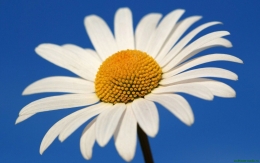
It so happened that in everyday life a plant is called chamomile, which in botanical terms has nothing to do with the genus Chamomile. As a rule, plants from the genus Nivyanik have habitual inflorescences with white ligulate marginal flowers and yellow tubular middle ones. Flowers from other genera of the Asteraceae family are very often found under the name yellow perennial daisy:
- gerberas
- nivyaniki
- doronicums
- chrysanthemums
- asters
Let's try to figure out which plant can rightfully be called yellow chamomile, and which is just called that.
Content:
- Description and types of yellow perennial chamomile
- How to plant yellow perennial daisies
- Transplanting into soil and caring for yellow chamomile
Description and types of yellow perennial chamomile
The genus Chamomile has a common botanical name Matricaria, which can be translated as mother herb. The genus includes about 20 species. The most widely known are chamomile and chamomile chamomile, also known as fragrant chamomile. As a rule, all daisies are perennial flowering herbaceous plants.
Wild chamomiles are very widespread. On the territory of the country they are found in the European part, in Siberia, and in the Far East. Most often, the height of the stems of daisies is from 15 to 60 cm. The leaves of daisies are pinnate or pinnately dissected. There are two types of flowers - tubular median and marginal false-lingulate.
It should be noted that description Neither fragrant chamomile nor chamomile chamomile fit the usual description of large white-yellow flowers. If we are talking specifically about daisies, then some varieties of exceptional chamomile or exceptional matricaria can be considered yellow perennial chamomile:
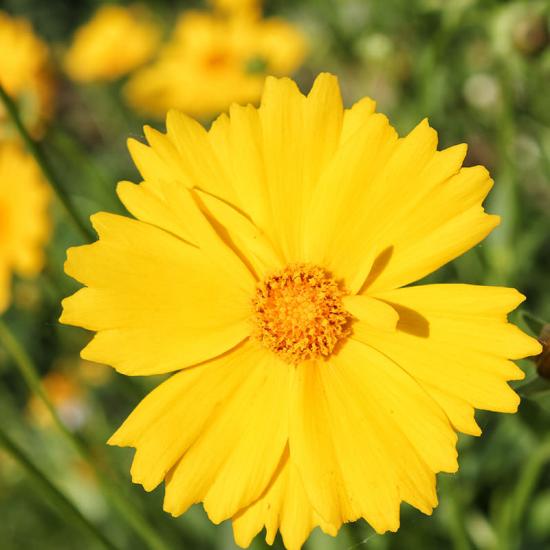
- Goldbal - double inflorescences in the shape of a ball of tubular flowers, round, spherical in shape with a diameter of 20 - 25 mm, yellow-cream color, no reed flowers
- Golden Ball - yellow or yellow-orange inflorescences, 30 mm in diameter, shoot height up to 35 cm
Despite the fact that these species belong to the genus Chamomile, in appearance they are unlike those plants to which this name is popularly assigned. It is more common to call yellow chamomile the perennial Nivyanika variety with yellow colored reed flowers. To such varieties relate:
- Banana cream - the inflorescences are semi-double, the reed flowers are yellow after blooming, followed by fading to ivory color, while the middle remains a rich egg yolk color, the diameter of the inflorescences is up to 10 cm.
- Goldfinch - double and semi-double flowers with golden-yellow narrow reed flowers, arranged around a yellow center formed by tubular flowers, stem height 0.4 - 0.6 m.
Important! Despite the differences, the Matricaria varieties and the yellow inflorescence varieties belong to the same Asteraceae family and have the same cultivation techniques. All plants that can be classified as perennial yellow daisies are not very demanding to care for. They can be planted and grown quite easily on the site yourself.
How to plant yellow perennial daisies
Almost all species and varieties can be grown by direct sowing directly into the garden bed.It is preferable to sow chamomile seeds before winter, although if this was not possible in September-October, then they can be sown in mid-May. However, taking into account the fact that yellow daisies are not yet frequent guests in garden plots, it is better to plant them for the first time by growing seedlings from seeds.
This method provides more guarantees that the daisies will successfully sprout and grow. The principles of growing yellow chamomile seedlings do not differ from growing other species and varieties of this plant. At the end of February - March you need to take the seating containers and fill them soil. You can buy ready-made universal soil or find a special one for flower crops.
You can add 200 - 300 grams of washed coarse sand to each kilogram of finished soil. If there is no such soil, then you can independently prepare garden soil, humus or peat, and sand in the fall.
Take one part of sand and peat for two parts of the earth. A small amount of wood ash or dolomite flour added to the soil for seedlings will not harm the seedlings. Mix all parts well and heat the soil in the oven. You can carry out decontamination in another way. Fill the containers with soil and moisten it well the day before sowing.
Important! To avoid moisture stagnation, you need to make sure there are drainage holes in the seedling containers. Chamomile seeds do not need special preparation before sowing. To avoid fungal diseases, they can be placed in a funidozole solution for 30 minutes. If you purchase seeds in a store, you must make sure they are suitable. Germination lasts no longer than three years.
Review of perennial yellow chamomile on video:
Spread the seeds on a damp surface and sprinkle with a layer of soil 3-5 mm thick.You can take calcined sand. Gently moisten the top layer, cover everything with film, this will help maintain the desired humidity. Place the boxes in a room where the temperature is + 18 + 20 degrees. As soon as the shoots appear, the boxes should be moved to a well-lit place and regular watering should be provided.
At the stage of two to three true chamomile leaves, you need to pick them up into individual containers. Seedlings of these flowers tolerate well transplant and quickly masters the new potty. Since daisies are quite tolerant of low temperatures, seedlings can be planted in the ground from mid-May, when the seedlings have 5-6 true leaves.
Transplanting into soil and caring for yellow chamomile
The best place for all daisies is a well-lit area with loose neutral or slightly alkaline soil. In the ground dug in advance to a depth of 30 cm, you need to make holes at a distance of 15 - 20 cm. Transfer the seedlings from cups into them, cover with earth and water well.
After two weeks, the seedlings can be fed with any liquid biofertilizer. The next feeding can be done with a mineral mixture after 15 days. Basic plant care is:
- to moderate watering
- weed removal
- loosening the soil and mulching it
All daisies are frost-resistant, but in the first 2-3 winters you still need to cover them with a layer of dry foliage of at least 10 cm. This is removed in early spring. After three to four years, the overgrown bushes need to be divided, otherwise the inflorescences will begin to shrink. Yellow chamomile looks good in both mixed and single-species plantings.
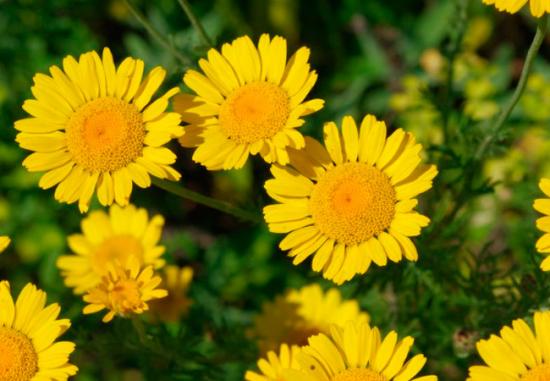
Pairs perfectly with blue and blue flowers. Just a word chamomile and translated as Roman, domestic gardeners love it very much and happily grow it on their plots.

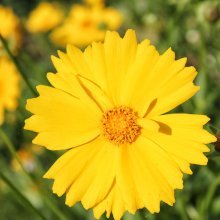


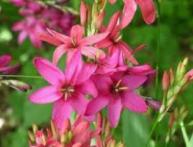
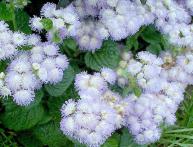

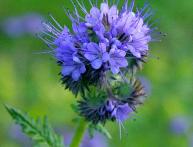

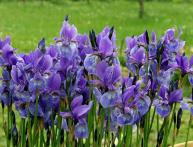
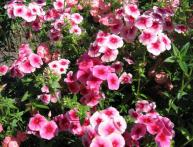
Comments
A simple but chic daisy flower. I plant it every few years. With its help you can make such bouquets. And it’s also great as a decoration for a flower garden. Planting is not capricious, the main thing is moist soil.